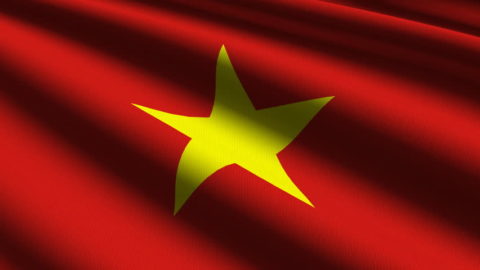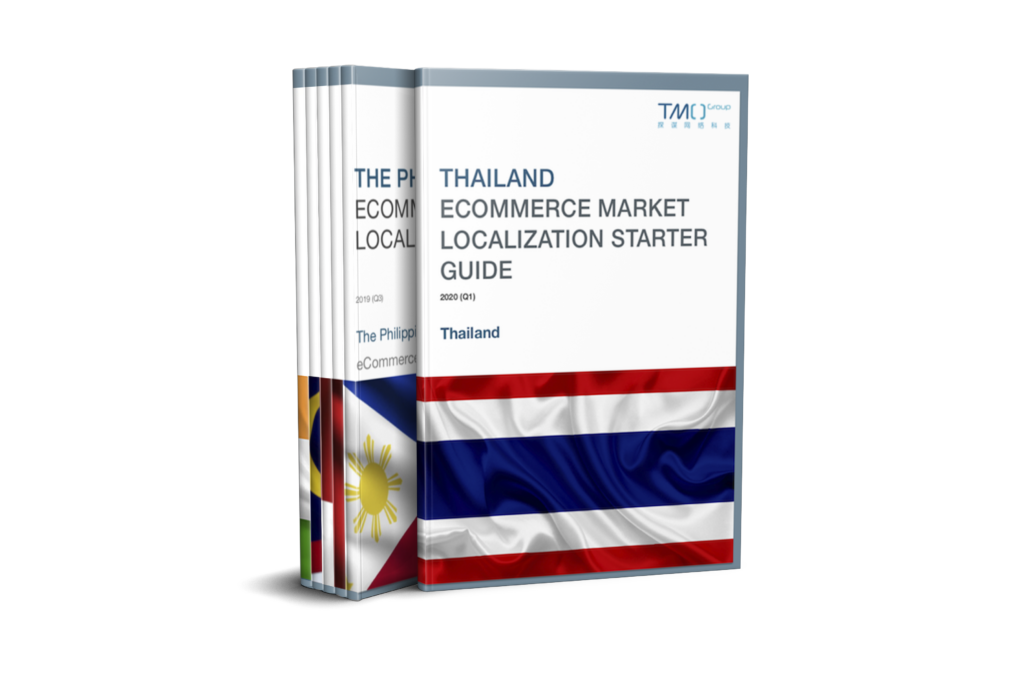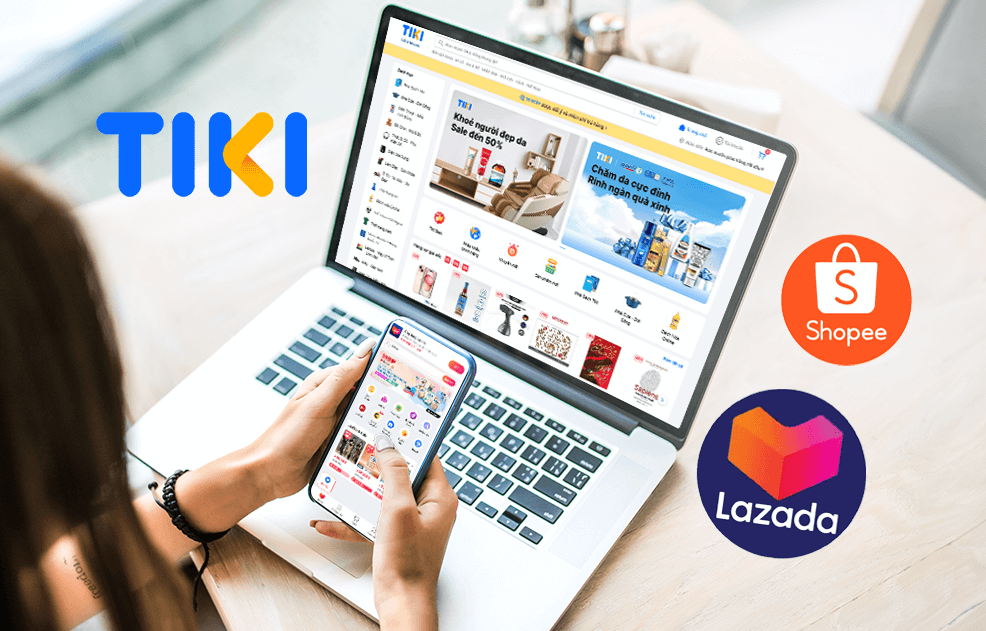When it comes to 10 Largest Online Marketplaces in Southeast Asia (2024)Southeast Asian eCommerce is one of the fastest developing and changing. We look at the Top 10 online marketplaces in the region in 2024.online shopping platforms in the South and Southeast Asian region, consumers are spoiled for choice. Today, we're going to look at the most popular platforms in India, Indonesia, Malaysia, Singapore, Thailand and Vietnam.
Indian eCommerce Marketplaces
The top 3 most popular online marketplaces based on monthly visits in India are Amazon India, Flipkart and Snapdeal.
Amazon India
Amazon entered India in February 2012 by launching Junglee.com. Customers could use this site to compare prices online without having to directly purchase the products. In June 2013 they incorporated Amazon India Limited as a private limited company, which is now a subsidiary of the US-based Amazon.com Inc. Amazon India’s headquarters is in Bangalore and they have offices in Chennai, Delhi, Hyderabad, Mumbai.
In 2018, Amazon India converted Junglee.com into Local Finds. Through this P2P platform, customers in Bengaluru, Chennai, Hyderabad, and Mumbai can sell their used/pre-owned phones. By focusing on individual sellers rather than retailers, the platform serves as one of Amazon India’s many weapons to increase their Indian customer base.
Currently estimated at a worth of 16 billion USD, Amazon India has about a 30% market share. This is about the same as their greatest local competitor Flipkart. Reports say that in its fight for eCommerce dominance, Amazon has invested at least 5 billion USD in Amazon India.
Looking to further augment penetration of consumer electronics to smaller Indian cities and towns, Amazon India also launched an offline shopping initiative, called Amazon Udaan. These physical outlets are aimed to help first-time users overcome their anxieties around online shopping, building trust and increasing the likelihood of customers purchasing online.
Flipkart
Launched in 2017 as Flipkart Marketplace Private Limited, they changed their name to Flipkart Internet Private Limited in November 2012. After starting out as a website for selling books, the platform currently offers 80 million products in over 80 categories. Besides their headquarters in Bangalore, they have offices in over 32 cities across India.
In May 2018, Flipkart accepted a 16 billion USD investment from Walmart, which took a 77% share in the company. Together with its subsidiary fashion platform Myntra, Flipkart reached 7.5 billion USD in annual GMV last year.
Flipkart’s performance heavily depends on the sale of consumer electronics, especially smartphones. The eCommerce giant had exclusive deals with key smartphone manufacturers such as Lenovo, LeEco, Xiaomi and Motorola. After Xiaomi ended this exclusive partnership, Flipkart is now looking to cooperate with rival smartphone maker Oppo.
Snapdeal
Snapdeal, owned by Jasper Infotech Private Limited, was founded in February 2010 and is headquartered in New Delhi, with offices in Mumbai and Bangalore.
In 2017, there were actually talks about a merger between Flipkart and Snapdeal. However, by July of that year, the definitive decision was taken to not go ahead with this plan. Afterwards, the company fell on hard times, but managed to survive by selling off its other subsidiary companies (including mobile wallet FreeCharge, logistics entity Vulcan, and eCommerce management company Unicommerce). In August 2017, Snapdeal changed its business model to a C2C eCommerce marketplace.
Global eCommerce player eBay invested 61 million USD in Snapdeal in February 2018, selling its stake in Flipkart India for 1.1 billion USD to Walmart when Walmart acquired a majority share in that platform.
Southeast Asian eCommerce Marketplaces
Lazada and Shopee pop up regularly when looking at Southeast Asian eCommerce marketplaces. Respectively backed by Alibaba and the Singaporean government, both are active in almost all SEA countries. Therefore, we're going to first take a closer look at these platforms to understand their business and background.
Lazada
German company Rocket Internet founded Lazada in 2007. It is now one of Southeast Asia’s largest and most popular online marketplaces. Operating in 6 countries in the region (Indonesia, Malaysia, Philippines, Singapore, Thailand and Vietnam), it serves more than 135,000 local and international sellers, 3,000 brands and 560 million consumers. Lazada's platform features a mix of B2C and C2C models. It sell goods to customers from its own fulfillment centers as well as providing a space for third party retailers to sell on the platform.
Two giants, Alibaba and Temasek Holdings (the global investment company owned by the government of Singapore) back Lazada. In November 2014, Lazada announced a funding worth 249 million USD from Temasek Holdings. China's Alibaba already invested 4 billion USD in total, increasing its total stake in Lazada to 83%.
Shopee
Shopee launched in Singapore in 2015 and now have offices in Malaysia, Thailand, Taiwan, Indonesia, Vietnam, and the Philippines. Officially registered under Shopee Singapore Private Limited, they are the second-largest player in Southeast Asia after Lazada. Originally starting out as a C2C mobile marketplace, they also set up Shopee Mall in 2017, which has strengthened their footing as a B2C marketplace.
Indonesia
Tokopedia
Founded in 2009, Tokopedia operates a marketplace that allows small retailers and large brands to sell to consumers in Indonesia. At this moment, there are 4 million registered merchants, and it is the number 1 eCommerce website in Indonesia. Originating as a C2C platform, Tokopedia recently started to make inroads into B2C by offering official store concepts to brands. Besides claiming to serve an impressive 93% of the country, they also provide same-day delivery to one quarter of its customers.
In December 2018, Tokopedia entered the Vision Fund after it raised 1.1 billion USD in an investment round led by SoftBank and Alibaba. Originally interested in getting Tencent on board, an intervention from SoftBank forced Tokopedia's management to go with Alibaba instead.
Tokopedia has also moved into payments, including mobile top-up, and financial services. CEO Michael Tanuwijaya hinted that it will continue its strategy to become a ‘super app.’ In November 2018 they also launched the app Mitra Tokopedia, which translates to Tokopedia Partners. This app is specifically aimed at owners of small shops and kiosks who can bridge the gap between online retail space and offline customers. Allowing offline shoppers to make cash payments for online purchases is also helping to further widen Tokopedia’s consumer base.
Bukalapak
Bukalapak launched in 2010 and also started out as a C2C platform. Like Tokopedia, it has moved into the B2C sphere and now also works with brands who can sell products to its consumers. It is currently one of the largest online marketplaces for micro-sellers in Indonesia and the second most popular platform overall. Indonesian media and tech mogul Emtek Group is its biggest shareholder with 49.21% ownership.
It is estimated that Bukalapak has about 15% to 20% of the eCommerce market in Indonesia. Overall, Bukalapak says it has 4 million merchants, over 50 million users, and a gross merchandise value of nearly 4 billion USD. In January 2018, Bukalapak’s CEO announced that they had officially become Indonesia’s fourth startup unicorn.
Besides its eCommerce business, Bukalapak is also expanding offline. They work together with some 300,000 small, family-owned convenience kiosks. Consumers without internet experience who want to buy something on Bukalapak can approach these kiosk owners to help place their online orders. The consumers pay in cash to the kiosk, and the kiosks receive a small commission on every deal they close for Bukalapak. Besides widening their audience, it allows kiosk owners who are only accustomed to selling offline to learn how to sell online and earn income as an agent of Bukalapak. This O2O2O system reportedly contributes 20% to Bukalapak’s revenues.
Malaysia
11street
Celcom Planet, a joint venture between the Malaysian Axiata Digital Services and South Korean eCommerce marketplace provider SK Planet, is behind 11street. Launched in 2015, they saw a 300% growth in total GMV between 2015 and 2017. They are the third most popular platform in the country and have about 40,000 sellers.
Malaysian investment holding company PUC Berhad announced a 90 million MYR (about 23 million USD) investment in Celcom Planet, indirectly granting it the management of 11street Malaysia. PUC Berhad also owns and operates a social marketing and eWallet platform known as Presto. It expects to benefit from 11street's eCommerce infrastructure and can cross-market their services to the platform's consumer and merchant base.
In September 2017, JD.com also invested in 11street. They launched 11street China together with a cross-border eCommerce platform in Malaysia.
Singapore
Qoo10
Qoo10 is the largest eCommerce platform in Singapore. They provide their services in 5 countries and regions: Singapore, Indonesia, Malaysia, China, and Hong Kong. Formerly known as Gmarket, the company was previously an officially part of eBay Singapore in 2010. Now belonging to the Korean Giosis Group, they officially changed their name to Qoo10 in 2012. Their registered name is Qoo10 Private Limited. The company is headquartered in Singapore and has offices in Indonesia, Malaysia, Shanghai and Hong Kong.
Thailand
JD Central
Launched as recently as September 2018, JD Central is already one of the top 10 online marketplaces in Thailand. Central Group, which controls Thailand’s biggest operator of shopping malls and department stores, established the platform as a 500 million USD joint venture with JD.com.
Besides its online platform, JD Central plans to open an automated retail store in Bangkok in 2019. They aim to be market leader of online retail in Thailand by 2020. With currently 2 warehouses in Bangkok, they hope to increase the number to 5 by the end of the year. JD Central offers both direct sales of products to consumers and a marketplace for online merchants without any commission fees.
They provide the fastest delivery service in the business at 4 hours and so far have had an average of 4 purchases with each order. By embracing advanced technologies, they can offer same-day delivery throughout Bangkok and the surrounding areas. Since the platform is a partner of a.o. DHL, this is their eCommerce logistics provider of choice.
Vietnam
The Gioi Di Dong
Of Vietnam’s most popular eCommerce platforms, only Mobile World Group’s The Gioi Di Dong is entirely Vietnamese. Founded in 2004, The Gioi Di Dong Joint Stock Company (English name: Mobile World JSC) is Vietnam's largest mobile phone retail chain. They have 478 mobile phone stores and 37 large-format consumer electronics stores.
In the first 5 months of 2018, the mobile device and consumer electronics retailer posted net sales of 37 trillion VND (1.61 billion USD). Their after-tax profit was 55.8 million USD, a 44% year-on-year growth.
Since February 2017, The Gioi Di Dong holds 40% of the offline mobile phone market share, and 16% of the overall offline electronics market. Its online platform The Gioi Di Dong focuses solely on mobile phones, but it also sells other appliances and electronics via Dien May Xanh. Phones, tablets, laptops and accessories accounted for 55% of Mobile World’s net revenue, followed by electronics, white goods and small appliances, with 40%.
Tiki
Founded in 2010 in Vietnam as an online book seller, Tiki is one of Vietnam’s favorite B2C eCommerce platforms. Tiki features more than 300.000 products in 12 categories of electronics, lifestyle and books. It has an annual GMV of approximately 240 million USD.
Tencent’s JD.com recently became one of Tiki’s largest shareholders in January 2018, investing roughly 44 million USD in the platform. In July of that year, Tiki officially launched its first cross-border ordering service Tiki Global. This platform serves as a JD.com eCommerce pavilion with thousands of original genuine goods from its foreign partners.
Its capability to control the end-to-end supply chain led to the company achieving the highest customer satisfaction rate and the lowest return rate among all eCommerce players in Vietnam. Their strategy included tactics such as partnering with brands to deliver high-quality merchandise, adequately managing warehouse and logistics, swiftly processing payments and providing superior customer service. It also offers delivery within 2 hours of placing an order for specific products.
South and Southeast Asia eCommerce
Do you want to know more about the developments and trends in South and Southeast Asian eCommerce? Then check out our complete 6-part series providing an overview, as well as details about all aspects of eCommerce in this booming region.
- Most Important South and Southeast Asian eCommerce Market Developments - Pt.1We delve into the South and Southeast Asian eCommerce volume and market potential of India, Indonesia, Malaysia, Singapore, Thailand and Vietnam.Most Important South and Southeast Asian eCommerce Market Developments - Pt. 1
- Most Important South and Southeast Asian eCommerce Market Developments - Pt. 2We delve into other South and Southeast Asian eCommerce developments in India, Indonesia, Malaysia, Singapore, Thailand and Vietnam.Most Important South and Southeast Asian eCommerce Market Developments - Pt. 2
- Defining South and Southeast Asian eCommerce ConsumersWe provide a detailed profile of South and Southeast Asian eCommerce consumers in India, Indonesia, Malaysia, Singapore, Thailand and Vietnam.Defining the South and Southeast Asian eCommerce Consumers
- Cash or Digital? South and Southeast Asian Payment MethodsPayment methods are a developing part of the South & Southeast Asian eCommerce sphere - we analaysed the current state & trends on paymentsCash or Digital? South and Southeast Asian Payment Methods
- South & Southeast Asian eCommerce Logistics: Opportunities Meet ChallengesRead about trends and characteristics of South and Southeast Asian eCommerce logistics in India, Indonesia, Malaysia, Singapore, Thailand and Vietnam.South & Southeast Asian eCommerce Logistics: Opportunities Meet Challenges
You also might be interested in our eCommerce Market Localization Guides, which include in-depth guides to some of Southeast Asia's most exciting markets.

















